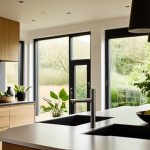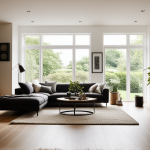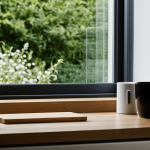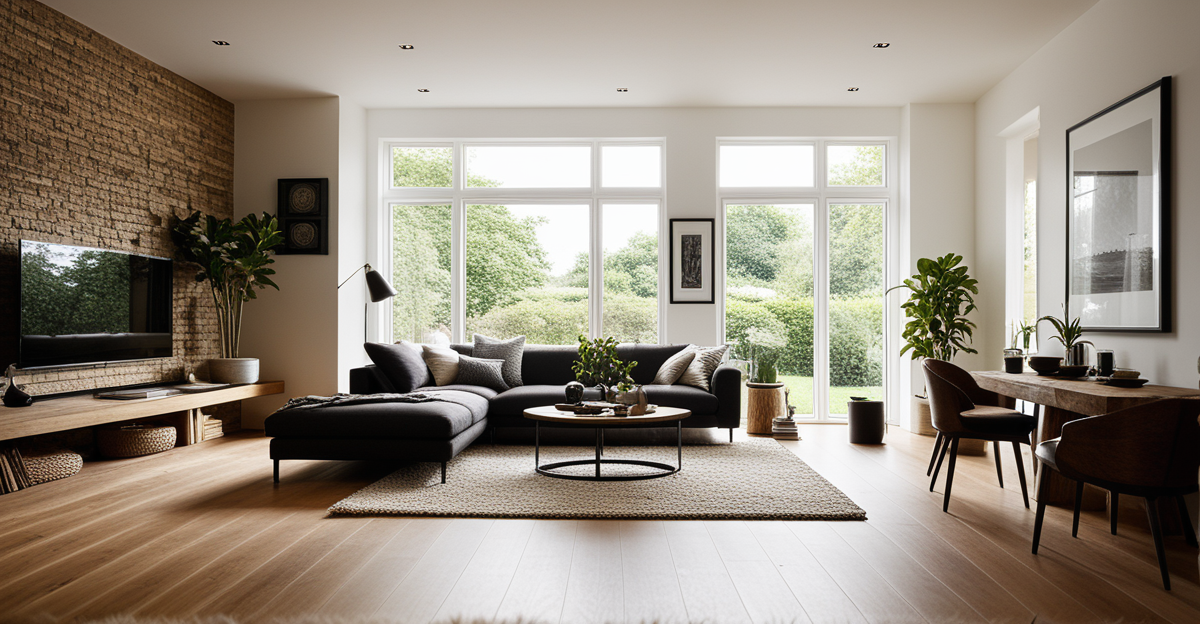Key ways your home environment influences daily well-being
The home environment plays a crucial role in shaping our well-being—impacting health, mood, and productivity. Elements such as lighting, organization, décor, cleanliness, noise, and layout create an ecosystem that directly affects how we feel and function daily. For instance, poor lighting can disrupt circadian rhythms, leading to fatigue and mood swings. Conversely, well-lit spaces encourage alertness and positive mood.
Organization and cleanliness reduce stress levels by diminishing clutter-induced cognitive overload. Messy environments often increase anxiety and hamper motivation, while tidy spaces promote relaxation and focus. Noise levels also have a strong influence; constant background noise can raise stress hormones, while quieter environments support restful sleep and mental calm.
Also to read : How Can Home Living Transform Your Daily Life in the UK?
Scientific research confirms these connections, revealing that thoughtfully arranged and maintained home environments can boost mental health and productivity. Optimal home design fosters stress management, enhancing emotional balance and overall health. Paying attention to these factors creates a foundation for daily well-being that supports both body and mind.
Key ways your home environment influences daily well-being
Your home environment profoundly affects your daily well-being, health, and mood. Lighting plays a crucial role—natural light boosts mood and energy by regulating circadian rhythms, while poor lighting can cause fatigue and irritability. Organization impacts mental clarity; cluttered spaces often increase stress and hamper productivity. Cleanliness is directly linked to both physical health and a sense of calm. A tidy home reduces allergens and creates a psychologically supportive atmosphere that fosters relaxation.
In parallel : How Can Sustainable Practices Transform Your Home Life in the UK?
Décor contributes to mood through colours and textures that either soothe or stimulate the senses. For example, blues and greens promote calmness, while bright colours may energize. Noise levels also shape well-being; excessive noise can raise stress levels, while quiet zones enable better focus and rest. Finally, the layout influences daily movement and comfort, affecting both physical health and mental ease. Research consistently shows that optimizing these home environment factors not only improves mood but also enhances overall health and stress management. Embracing these elements is key to cultivating a space that nurtures your daily well-being effectively.
The science behind home space and mental health
Research in the psychology of home reveals a strong relationship between our environment and mood. Psychological theories, such as environmental psychology, explain that surroundings influence emotional states by affecting sensory input and cognitive processing. Studies show that environmental stressors—like clutter, noise, or poor lighting—increase anxiety and symptoms of depression. For example, chronic exposure to noisy or chaotic home spaces can elevate cortisol levels, heightening stress.
Conversely, optimized home environments promote better mental health by supporting feelings of safety and control. Research-backed benefits include reduced anxiety and improved emotional balance when spaces are designed with comfortable lighting, soothing colours, and minimal distractions. A well-curated home environment fosters resilience against stress, enhancing overall well-being.
These findings underscore the importance of deliberate choices in our living spaces. By understanding how the psychology of home operates, individuals can transform their spaces to strengthen both mood and mental health effectively. Creating a living space mindful of emotional needs is a practical step toward sustained psychological wellness.
The science behind home space and mental health
Exploring how environment shapes psychological well-being
The psychology of home demonstrates a strong link between surrounding spaces and mental health. Environmental factors influence our brains by either triggering stress responses or promoting calm. According to research, chaotic or cluttered spaces act as environmental stressors, increasing anxiety and even symptoms of depression. This happens because irregular sensory input taxes cognitive resources, reducing emotional resilience.
Studies show that optimized home spaces enhance emotional balance by fostering control and predictability. For example, a well-organized, aesthetically pleasing environment supports positive mood and reduces cortisol, a stress hormone associated with chronic anxiety. Research also highlights how access to natural elements through windows or indoor plants positively impacts both environment and mood, lowering heart rate and improving mental clarity.
Psychological theories such as Attention Restoration Theory suggest that environments offering restorative experiences—like order and nature—help heal mental fatigue and boost well-being. Thus, designing your home to minimize stressors while maximizing comforting stimuli can tangibly enhance your overall mental health and emotional state.
Daily impacts of home organization and cleanliness
Maintaining home organization and cleanliness significantly shapes your daily well-being by reducing stress and enhancing productivity. Cluttered spaces can overwhelm cognitive processes, increasing anxiety and decreasing motivation. Research shows that disorganized rooms disrupt focus, making it harder to complete tasks efficiently.
Regular cleaning routines help create a calming atmosphere by lowering allergens and visual distractions. This promotes relaxation and mental clarity, supporting better emotional health. Simple habits—like daily tidying, setting storage zones, and decluttering regularly—help sustain an orderly environment without overwhelming effort.
Effective home organization also fosters a sense of control, which psychologists link to lower stress levels. Prioritizing clear surfaces and designated places for belongings streamlines daily activities and reduces decision fatigue. In contrast, chaotic surroundings can trigger cortisol spikes, worsening stress.
By implementing practical organizational strategies and keeping cleanliness consistent, individuals improve both their mental and physical states. This approach transforms living spaces into supportive areas that encourage calm, focus, and overall well-being throughout the day.
Daily impacts of home organization and cleanliness
The role of order and hygiene in boosting well-being
Home organization and cleanliness critically influence daily well-being by shaping mental clarity and stress levels. Clutter impacts cognitive function; when spaces are messy, the brain expends extra effort filtering distractions, increasing anxiety and reducing motivation. This aligns with psychological findings that disorganized environments overload working memory, intensifying feelings of overwhelm.
Maintaining a regular cleaning routine promotes relaxation by reducing allergens and creating a visually calm space. Clean, orderly surroundings cue the brain to feel safe and in control, which scientific studies link to lower cortisol levels and improved mood.
Practical strategies include decluttering in manageable steps, using storage solutions to keep items organized, and setting consistent cleaning schedules. These actions help preserve an environment that supports focus and productivity, while also lowering stress.
Ultimately, cultivating home organization and cleanliness is a foundational step toward enhancing both mental and physical health, fostering a living space that truly nurtures your daily well-being.
How lighting and décor influence mood and energy
Brightening your space for a better day
Lighting plays a crucial role in regulating our mood and energy levels by syncing with our circadian rhythms. Natural light exposure boosts serotonin production, enhancing alertness and happiness, while inadequate lighting can cause fatigue and irritability. Scientific studies confirm that well-lit environments reduce symptoms of depression and improve productivity by creating a more stimulating atmosphere.
Home décor complements lighting by influencing emotional responses through colour and texture. For instance, blues and greens are known to promote calmness, lowering stress hormones. Conversely, vibrant reds or oranges can increase energy and motivation but may also trigger agitation if overused. Personalising décor with meaningful items and harmonious colours fosters a sense of comfort and control, positively affecting mood.
To optimise lighting and décor for well-being, combine layered artificial lights with natural light where possible. Use adjustable bulbs to mimic daylight cycles and choose décor colours aligned with your emotional needs. Thoughtful design in these areas supports sustained energy levels and balanced mood throughout the day.
How lighting and décor influence mood and energy
Lighting and décor shape more than just a home’s appearance
Lighting profoundly affects mood and energy levels by regulating circadian rhythms. Exposure to natural light increases serotonin production, enhancing alertness and positive mood. In contrast, dim or artificial lighting can disrupt sleep patterns, causing fatigue and irritability. Strategically placed windows and light sources help maintain healthy biological cycles vital for mental health and daily well-being.
Complementing lighting, home décor influences the emotional atmosphere through colour and texture. Psychological studies show that blues and greens soothe and reduce stress, while warmer hues like yellow stimulate creativity and vitality. Personalising décor to reflect individual tastes supports a sense of control and emotional comfort, reinforcing positive mood.
For practical optimisation, incorporate layered lighting—combining natural, ambient, and task lighting—to adapt to different activities and times of day. Using calming colours in key areas promotes relaxation, while accent colours can uplift energy in workspaces. Thoughtful integration of lighting and décor transforms the home environment into a dynamic setting that supports both vitality and emotional balance.











